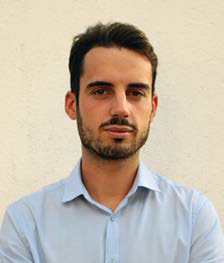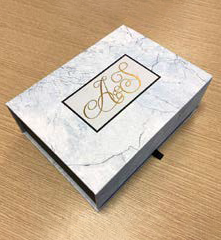The importance of prototyping and mock-ups in the printing & packaging industry

Needless to say, that huge companies are steadily on the lookout for very large and expensive printing and cutting machinery to accomplish the huge amounts of orders they get every day. These machines enable to speed up the production. But at the heart of a long production, there is always a single item, known as prototype, which is nothing but the very first representation of a box that has been realized with the die-cutting process.
In today’s economy, realizing someone else’s vision in a timely manner is an increasingly essential part of business. You won’t have to wait weeks to see your mock-up or prototype. You also won’t have to meet a minimum order amount to take advantage of your service. Just-in-time is the payoff which always accompanies the world of mock-ups. Prototype packaging solutions for boxes, bags, wrappers, labels, folders and POP displays.
What is a prototype?
A prototype is at the very core of long runs in every production process. No matter what they final outcomes in terms of quantity should be like, a prototype is always necessary. When it comes to packaging, a good prototype box must feature some precise traits. Only when the prototype is done can the sample be sent to die maker where it will be manufactured and released on a large scale.
But why is a prototype that important?
The prototype of a box is of utmost importance because it makes you feel the inner nature of a long series of repetitive jobs which are generally made through the die-cutting process. A very recurrent synonym of prototype is mock-up. Both words well describe the fact that we are talking about one, two, maximum five pieces of a single job. But even though the quantity is so little, the precision, the quality and the attention cannot be underestimated. The mock-up must be perfect in all its shapes, because when it will comply with some agreed features, it will be then produced on a vast scale with the die.
A company committed in the realization of mock-ups can immediately experience some concrete advantages, among which the elimination of start-up and outsourcing costs. By outsourcing less, you’ll be able to streamline your production processes and gain greater control over quality and costs. Producing in house is less risky from an organizational point of view and, having everything under control, you can better manage time and workflow. Also, you will be able to produce the quantities requested by the customer without constraints and MOQ. You will no longer be forced to produce large runs to reduce start-up costs.

Matteo Muto
Sales & Marketing Manager at Valiani
“In today’s economy, realizing someone else’s vision in a timely manner is an increasingly essential part of business”
What device can I use to create the perfect prototype?
Flatbed cutting plotters are generally demanded for jobs like these. The main function of these devices is that they allow the operator to cut several substrates without the use of a traditional die cutter. Since they are normally available in several formats, the choice of the machine size will then go hand in hand with the size of the material to be processed and, if it is printed, with the capacity and maximum print size that can be achieved. Without a plotter you will often have to rely on an external supplier and adapt to pre-made cutting dies: in essence you will find yourself acting on projects already made by others. On the other hand, with a flatbed plotter, you’ll always be able to design and make original projects on your own.
The rising interest in the flatbed cutting machines well explains the rising interest in the world of mock-ups. If we go through the basic features of a box prototype, we figure out that a well-made prototype must be conceived, designed and realized. Under no circumstances can these three steps be missing. For each of this phase, these recommendations might be enlightening in order to get closer to the realization of a box prototype.

Packaging for shopping and cosmetics
The conception phase is very often preceded by a drawing on a paper. Graphic designers, architects, engineers might be starting from here. When the draft is made on a sheet of paper, we pass to the most intricating phase, the designing one. In this case, specific software for packaging creation come in handy. Supportive materials might include folding carton, corrugated cardboard and grey rigid board. There exist both CADs to create from scratch new shapes and ideas as well as specific programs allowing to resize pre-existing templates by simply changing some parameters like the height, the width and the depth. Focusing on the visual aspect of the design process, these programs offer intuitive 3D prototyping and realistic visualization of the different types of material. This integration allows graphic and CAD software to complement each other by increasing productivity without requiring any effort.
Finally, we arrive to the most exciting and intriguing phase, represented by the cutting process. These days the widespread rise of small digital cutting machines is helping graphics designers of boxes to free their imagination and put into practice what they have in mind. Cutting machines are in fact the hand, the device with which a designer implements his own projects by cutting and creasing cardboard and paper of any type.

Valiani Packaging Mockup Software
Which materials do I need to cut to make a box mock-up?
Most of the times, box prototypes are made of cardboard. The family of cardboards is incredibly wide. Folding carton is highly appreciated in the cosmetics and pharmaceutical field. This material is generally printed on a digital or offset printer before being cut. Corrugated cardboard is very common in the food and beverage industry. Then other times, designers resort to grey chipboard to make up their luxury boxes. These boxes are in fact characterized by a particular 45° bevel cut which can be made only by adopting a cutting machine. These boxes are then wrapped and coated with light paper before being commercialized.

A circular box for biscuits

An example of high-end luxury packaging

Box for a mobile phone
The high revenues generated by prototyping
It comes not as a surprise that today the marginality is higher on very small runs rather than on long production. Small runs of different batches are highly appreciated and bring profit because of two aspects: timing and customization. Timing means that you can conceive a box prototype very rapidly when you use a cutting machine. These digital systems allow to cut and crease any type of soft and rigid materials so as to be able to have in your hands a manufactured items in a very short time. Customization simply means personalizing your ideas and giving shape to it together with the customer, just by following his requirements. Obviously, this cannot be possible by using the dies. Small cutting machines used for packaging prototypes and mock-ups are compact, versatile, long-lasting and has an affordable price whose investment is going to be recovered quickly.

